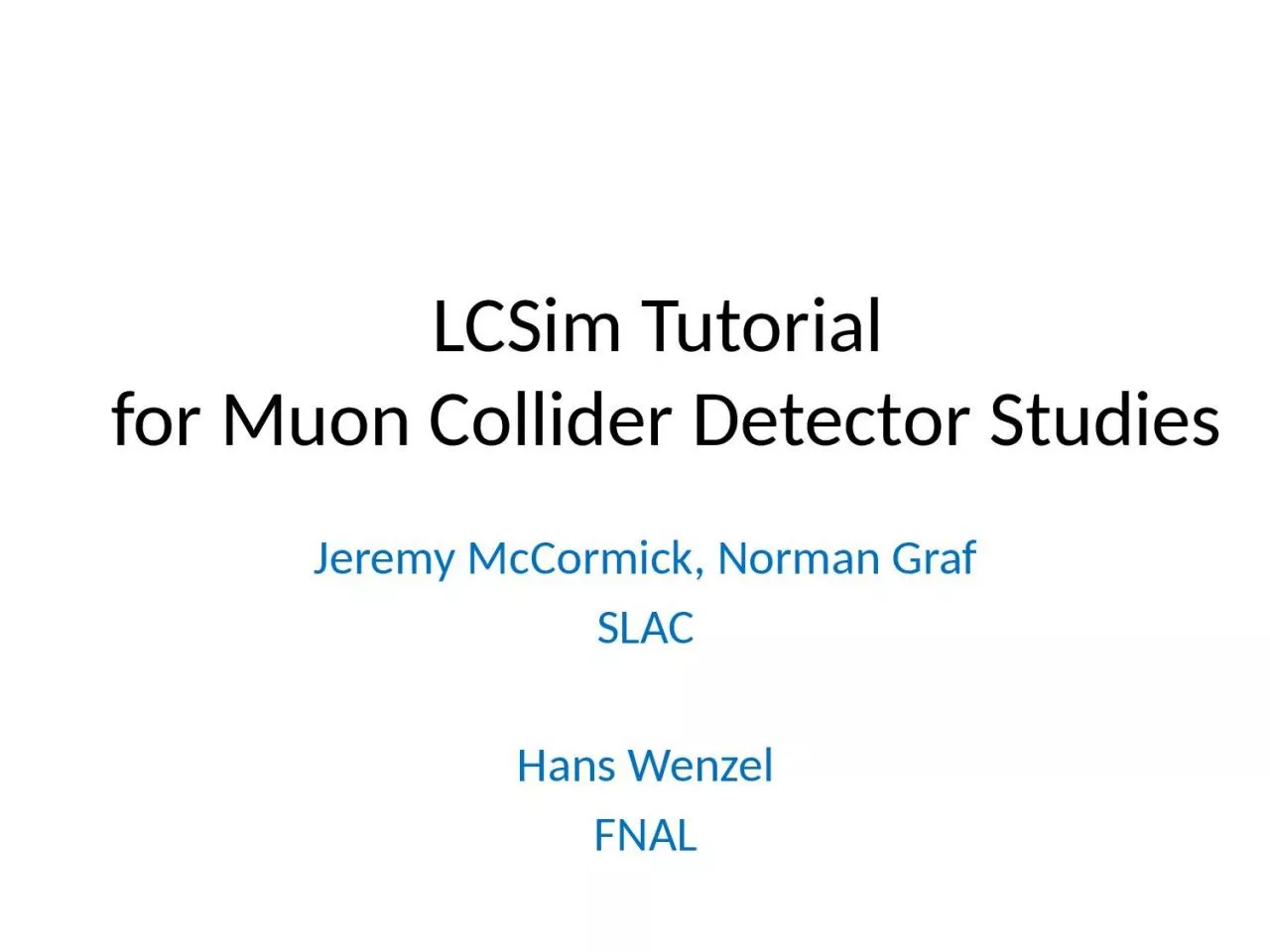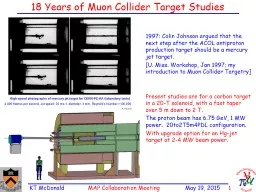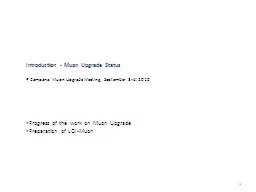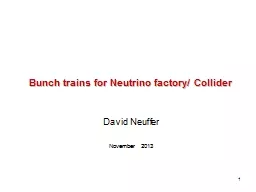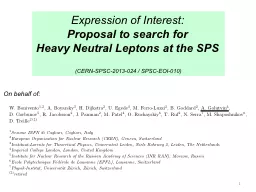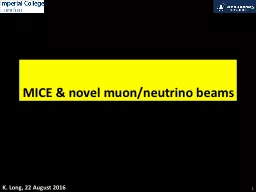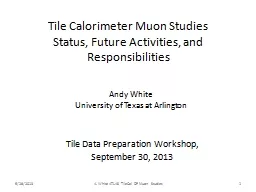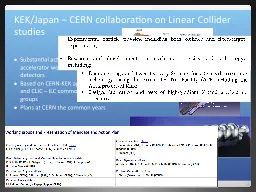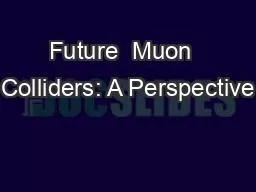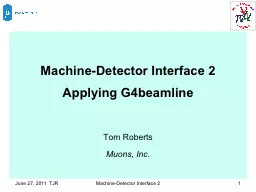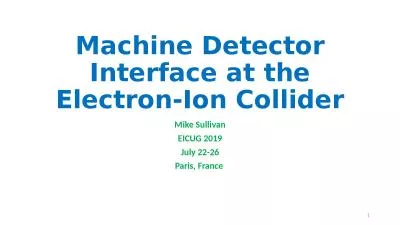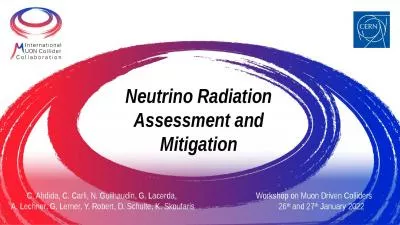PPT-LCSim Tutorial for Muon Collider Detector Studies
Author : InLoveWithLife | Published Date : 2022-07-28
Jeremy McCormick Norman Graf SLAC Hans Wenzel FNAL What can LCSim Framework do SLIC simulation of diverse detector geometries and readout technologies with SLIC
Presentation Embed Code
Download Presentation
Download Presentation The PPT/PDF document "LCSim Tutorial for Muon Collider Detect..." is the property of its rightful owner. Permission is granted to download and print the materials on this website for personal, non-commercial use only, and to display it on your personal computer provided you do not modify the materials and that you retain all copyright notices contained in the materials. By downloading content from our website, you accept the terms of this agreement.
LCSim Tutorial for Muon Collider Detector Studies: Transcript
Download Rules Of Document
"LCSim Tutorial for Muon Collider Detector Studies"The content belongs to its owner. You may download and print it for personal use, without modification, and keep all copyright notices. By downloading, you agree to these terms.
Related Documents

